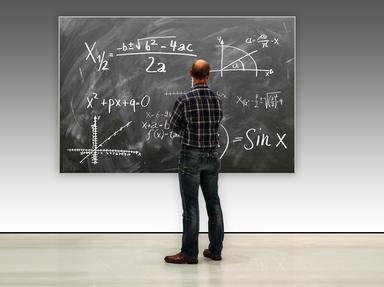Quiz Answer Key and Fun Facts
1. Gases are generally more compressible than solids and liquids.
2. Perhaps the best known equation pertaining to the gas laws is the ideal gas equation. Which of the following laws may NOT be required to derive the ideal gas equation?
3. Which of the following is NOT one of the postulates of the kinetic theory of gases?
4. You have a gas 'A' at pressure k in a container. You have another gas 'B' at pressure 2k in another container, which has only half the volume of the one containing gas A. If both the containers are mixed together, what is the pressure given that the two gases don't react?
5. At the same conditions of temperature and pressure, which of the following gases will diffuse the fastest?
6. Certain assumptions in the kinetic theory of gases have been found to be fallacious through experimentation. This results in differences between the behavior of real gases and the ideal gas, barring certain conditions. Which is NOT a fallacious assumption?
7. While learning thermal physics and thermochemistry, you are sure to encounter the Maxwell-Boltzmann distribution graph. What does the peak of the curve represent?
8. Real gases behave differently from ideal gases. Which scientist is credited with making adjustments accordingly and formulating the 'real gas' equation named for him?
9. At conditions of standard temperature and pressure (STP ), which of these has the highest mass? (Remember that each of these consist of diatomic molecules)
10. With the number of molecules staying the same, an ideal gas is heated until it is twice the original temperature and the pressure is doubled as well. What happens to the volume of the gas?
Source: Author
pokho
This quiz was reviewed by FunTrivia editor
rossian before going online.
Any errors found in FunTrivia content are routinely corrected through our feedback system.
